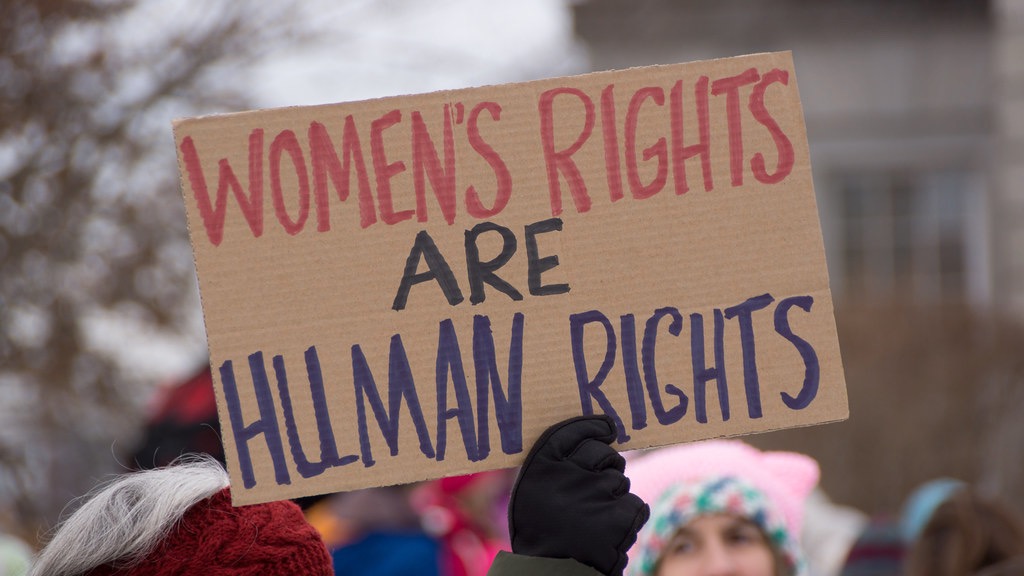
Despite societal advancements, the struggle to control women is a discourse that has continued to permeate every aspect of a woman’s life, from her bodily autonomy to daily ‘casual sexism’ that implicitly questions her right to equal treatment and respect. The relentless targeting of women for their desire to be treated with equal dignity and any refusal to relent to the traditional role of the submissive and weak being is a narrative that has accompanied the female existence for centuries. Modern day attacks on women – whether physical, legal and verbal – can be paralleled with the infamous witch trials, which took place in both early modern Europe and colonial America.
As it happens, Exeter played a particularly central role in the witch trials in Britain. Not only was Exeter the last place in England where people were executed for witchcraft, it was also likely one of the first places where a supposed witch was sentenced to death. Whilst men were occasionally trialled for witchcraft, women accounted for around 80% of the people tried. This figure alone makes it subsequently incontrovertible that gender was at the forefront of the witch trials, arising as a byproduct of fear surrounding changing social roles of women and the subverting of traditional expectations. In his article, ‘It Is But an Olde Wytche Gonne’: Prosecution and Execution for Witchcraft in Exeter, 1558–1610, Stoyle identifies that scholars have found an undeniable connection between “women who rebelled against social and gender norms by hurling everyday invective against their neighbours and those who did so by allegedly hurling occult imprecations against them”. Thus, whilst many contrasting reasons were given for accusations of witchcraft, ultimately, most supposed witches were considered to be so primarily due to deviation from social hegemony.
In his article, The European Witch Craze of the 14th to 17th Centuries: A Sociologist’s Perspective, Ben-Yehuda notes that the changing social role of women from the 12th century to the mid-17th century significantly impacted the allegations of witchcraft. According to him, in the 15th century, there was an increasing number of single women understood through a reluctance of men to marry, resulting in women entering a competitive job market which “produced a virulent misogyny ideology”. Moreover, the greater proportion of unmarried men and women gave rise to sexual license, and the sexuality of single women became a weapon with which to condemn them, a legacy which is still mirrored in the current treatment of women. In relation to the witch trials, women’s sexuality was often used as a scapegoat for feelings of guilt or resentment harboured by men regarding supposed moral corruption as a result of engaging in sexual activities with these women. Due to the inferior status of women – under both secular and religious law – these men were able to accuse women of manipulating them with witchcraft. For example, multiple trials portrayed men’s sexual behaviour as ‘against their will‘ and purely ‘the consequence of women’s unnatural control over them’. One particular case exemplified this absurdity, accusing a woman of “cursing a man by giving him a permanent erection”.
This conception of women being morally corrupt, purely by virtue of existing as a female under the male gaze, is not the outdated stance that it should be. Present-day women still face accusations of being responsible for the behaviour of men on a daily basis. Take, for example, school dress codes: girls are repeatedly chastised throughout their schooling for having the physicality of a female. As women, we are taught that we are inherently problematic for the concentration of boys; that if we do not shield our bodies from view, we are responsible for being targeted by any subsequent inappropriate behaviour. Bates illustrates this reality, noting that girls are persistently punished for dress-code violations and told that “the sight of their shoulders, knees or bra straps [is] unfair to male teachers or risked distracting the boys”. Similarly, in cases of sexual harassment or sexual assault, people all too often seek to put the blame on the victim, asking ‘what were you wearing?’, insinuating that if you weren’t hiding your body, you shouldn’t expect a man to be able to control himself.
It is on that account evident that, in many ways, the witch trials era never truly ended. Whilst legal sentences and executions have been eradicated, the fundamental core of the witch accusations still permeates current society. It then comes as no surprise that we find the old refrain of ‘women being inherently corrupt and responsible for undesirable behaviour of others’ being woven into the minds of young girls the minute they are able to communicate and thus instilling the mantra that women’s bodies cause “innocent men to behave in ways they could not control”. The female story is the same cross-century: we are problematic. As Ben-Yehuda poignantly summarises, “the [accusations and consequential castigation of the] unlimited sexual powers and depravity of women may have been a reflection of the fear engendered by the large number of unmarried women not subject to the authority of fathers or husbands, as, according to prevailing views, they ought to have been.” This sense of taboo around the idea of a woman having power and autonomy to construct a life of independence on equal footing with their male counterparts is still not wholly accepted in current society.
Earlier this year, the Guernsey Press published an opinion piece titled Few women are suited to politics, in which the author, C.Davey, explicitly emphasised a backlash against women being equal in intellect and respect to men, stating that whilst some women are suitable for involvement in politics, “the majority…are happier doing what their gender uniquely permits them to do: bearing the next generation, providing a happy home and bringing comfort to those who not only require it but are entitled to it”. This article represents a microcosm of the continual stigmatisation around empowered women and highlights the broader issue that is the legacy of fear of the independent woman who embraces both her intellect and sexuality, all of which was evident as an implicit core concern of the witch trials.
The perpetual nature of the retaliation against female empowerment suggests the damage that has been created by a political, legal, and social path dependency regarding the placement of women in society. The attempts to restrict and chastise women are still very much present in society, evident in abortion legislation, violence against women, and victim-blaming to name only a few. It is thereby clear that the theme of controlling women and the backlash still directed against women nowadays fundamentally echoes a cross-century stigmatisation of women embracing their own identities. Thus, whilst the official witch trials may have ended, attempts to control and regulate women have never disappeared; women are still deemed a threat to political practice and hegemonic ideas which enable the championing of patriarchal ideology.
Image: Marc Nozell, January 2017 // CC BY 2.0



Average Rating